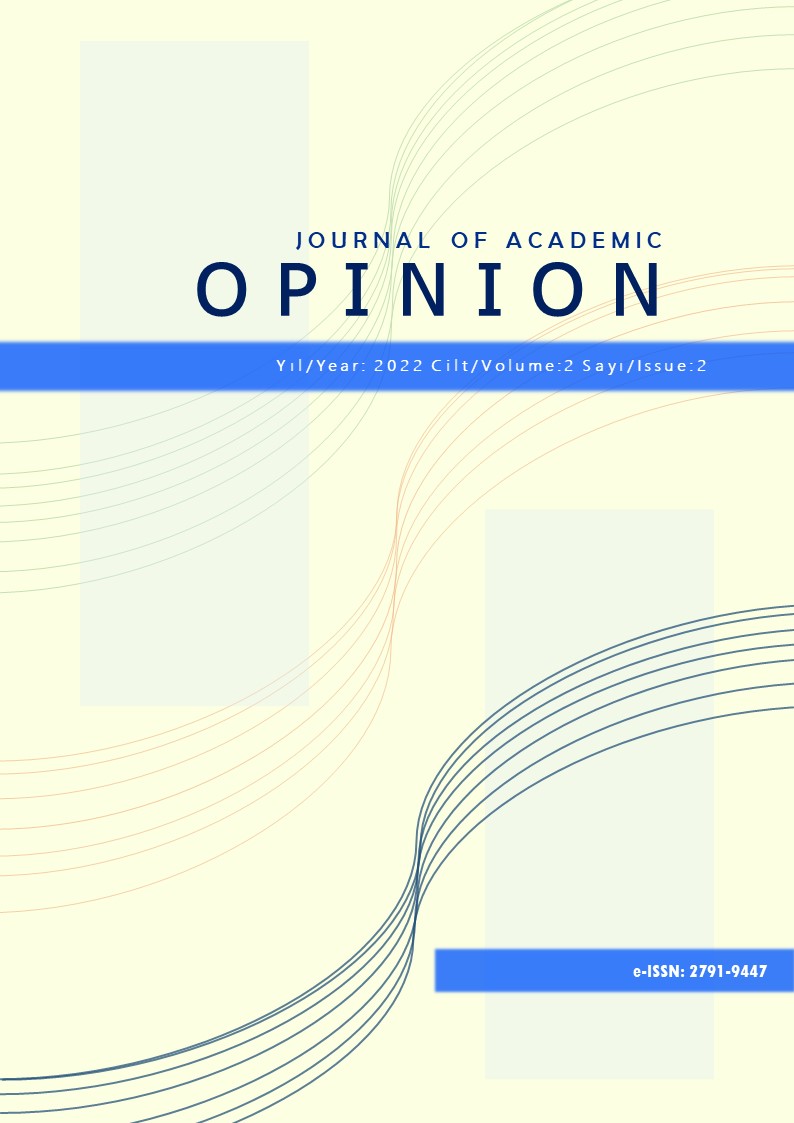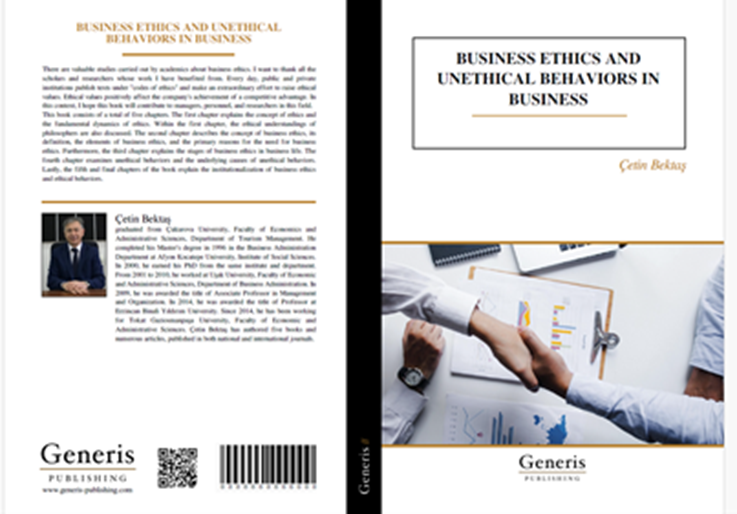State Bank of Pakistan Policies and The Lending Behavior of Commercial Banks: A Case of Pakistan from 1972-2021
Anahtar Kelimeler:
Broad Money, Loan Growth, Monetary PolicyÖzet
This paper aims to investigate the impact of various monetary policy tools used by the State Bank of Pakistan on the lending behaviour of commercial banks by applying a series of econometric tests on the data. A time series data is collected from 1972 to 2021 to see the impact. The approach that is used to estimate the econometric model is ARDL (Auto Regressive Distributed Lag Model). The paper sheds light on the policies under taken by the state bank in the monetary stance that has either a direct or an indirect effect on the volume of loan growth. It is hence found that in times of expansionary monetary policy the level of private credit given increases. The main finding of this study is that growth in broad money means more credit and vice versa. More money means more credit. The research concludes that the instruments of control are effective only in the long run. The expansionary monetary policy has resulted in the opposite direction is supported by literature. Moreover, the growth is broad money has a positive and significant result in the model. The key implication of the findings is that credit to the private sector is an effective channel for monetary policy transmission in Pakistan. It is recommended therefore that monetary authorities in developing countries should consider credit as a major channel for implementing monetary policies. It is hence recommended that monetary authorities in developing countries should credit as a major channel for implementing policies in the monetary framework.
Referanslar
Aban, M. J. (2013). Transmission of Monetary Policy through the Bank lending Channel in the Phillipines. International Journal of Trade , Economics and Finance , 37-42.
Aftab, Nadeem & Jebran, Khalil & Ullah, Irfan & Awais, Muhammad. (2016). Impact of Interest Rates on private credit : Evidence from Pakistan. Jinnah Business Review, Vol 4, 47-52.
Amidu, M. (2006). The Link between Monetary Policy and Banks Lending Behavior: The Ghanian Case. Banks and Bank Systems , 38-48.
Bellalah M., Ali S. A. & Masood O. (2013). Sensitivity Analysis Of Domestic Credit To Private Sector In Pakistan: A Variable Replacement Approach Application With Cointegration. Thema Working Paper No 2013-17, Université de Cergy Pontoise France, March
Bernanke, B., S., & Gertler, M. (1995). Inside the Black Box: The Credit Channel of Monetary Transmission. Journal of Economic Perspectives 9 (Fall 1995), 27-48.
Bernanke & Blinder, B. S. (1992). The Federal Funds Rate and the Channels of Monetary Transmission. The Amercican Economic Review, 82 , 901-922.
Bulusu. N (2020). Why Do Central Banks Make Public Announcements of Open Market Operations? Bank of Canada Staff Working Paper No. 2020-35
Gambacorta, L. (2005). Inside the bank lending channel. European Economic Review 49 , 1737-1759.
Imran, Kashif & Nishat, Mohammed. (2013). Determinants of bank credit in Pakistan: A supply side approach. Economic Modelling. 35. 384-390. 10.1016/j.econmod.2013.07.022.
Janjua, M. A. (2005). Money Supply, Inflation and Economic Growth. The Lahore Journal of Economics , 74-105.
J. Peek, E.S. Rosengren (Eds.), Is Bank Lending Important for the Transmission of Monetary Policy? Federal Reserve Bank of Boston Conference Series, No. 39 (1995), pp. 47-68
Kalu O. (2016). Emenike, How Does Monetary Policy And Private Sector Credit Interact In A Developing Economy? Intellectual Economics, 10( 2), 92-100.
Kahn, A., G. (1991). Does More Money Means More Bank Loans? Economic Review, 21-29
Kaldor, N. (1956). LA EVOLUCIÓN CAPITALISTA A LA LUZ DE LA TEORÍA KEYNESIANA. El Trimestre Económico, 23(91(3)), 284–298.
Kashyap, A. K., Stein, J. C., & Wilcox, D. W. (1993). Monetary policy and credit conditions: Evidence from the composition of external finance.
Kashyap, A. K. and Stein, J. C The impact of monetary policy on bank balance sheets Carnegie Rochester Conference Series on Public Policy, 42 (1995), pp. 151-195
Kashyap, A. K. and Stein, J. C (2000). What do a million observations on banks say about the transmission of monetary policy American Economic Review, 90 (3) , pp. 407-428
Kashyap A.K, Rajan.R, Stein, J.C (2002). Banks as liquidity providers: An explanation for the coexistence of lending and deposit-taking The Journal of Finance, 57 (1), pp. 33-73
Kishan,R.P and Opiela T.P (2000). Bank size, bank capital and the bank lending channel Journal of Money, Credit, and Banking, 32 (1) ), pp. 121-141
Malede, M. (2014). Determinants of Commercial Banks Lending: Evidence from. European Journal of Business and Management, 109-117.
Matemilola, Bany-Ariffin, T. & Muhtar B.-A. (2015). The Impact Of Monetary Policy On Bank Lending Rate In South Africa. Borsa Istanbul Review , 53-59.
Modugu, K.P. and Dempere, J. (2022), "Monetary policies and bank lending in developing countries: evidence from Sub-Sahara Africa", Journal of Economics and Development, Vol. 24 No. 3, pp. 217-229
Nwakanma, P. C., Nnamdi I. S. & Omojefe, G. O. (2014). Bank Credits to the Private Sector: Potency and Relevance in Nigeria’s Economic Growth Process. Accounting and Finance Research, 3( 2), 23-35
Rasheed, M.A. (2011). The Relationship Between Money Supply And Real Variables: Pakistan’s Experience (1972-2008). Pakistan Business Review, 715-746.
Tabak, B. M., Laiz, M. T., & Cajueiro, D. O. (2010). Financial stability and monetary policy-The case of Brazil. Revista Brasileira de Economia, 67, 431-441.
Retrieved from http://www.sbp.org.pk/m_policy/About.asp.
Stein, J.C (1998). An adverse-selection model of bank asset and liability management with implications for the transmission of monetary policy RAND Journal of Economics, 29 (3) , pp. 466-486
Van den, S.J (2001). Heuvel Banking conditions and the effects of monetary policy: Evidence from U.S. states Mimeo., University of Pennsylvania
Pesaran, M. H., Y. Shin, and R. Smith, 2001, Bounds testing approaches to the analysis of level relationships. Journal of Applied Econometrics, 16, pp. 289-326.
İndir
Yayınlanmış
Nasıl Atıf Yapılır
Sayı
Bölüm
Lisans
Telif Hakkı (c) 2022 Journal of Academic Opinion

Bu çalışma Creative Commons Attribution 4.0 International License ile lisanslanmıştır.





